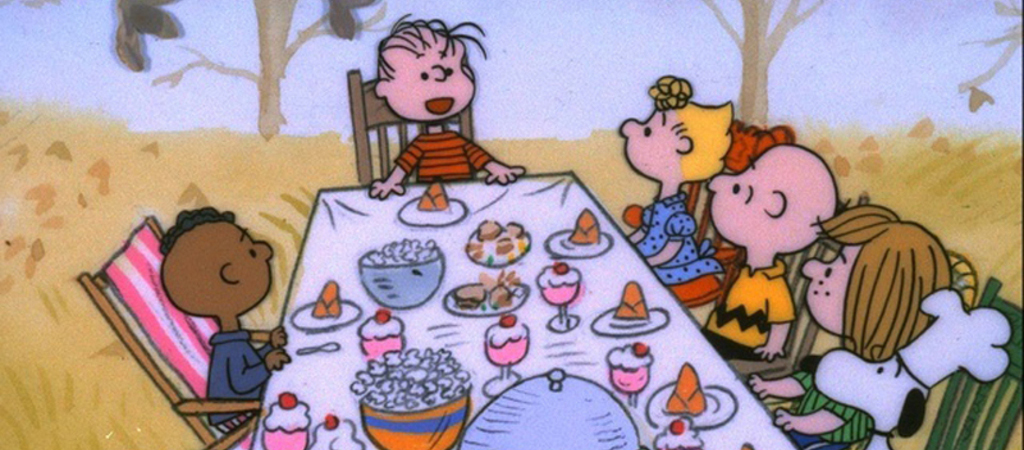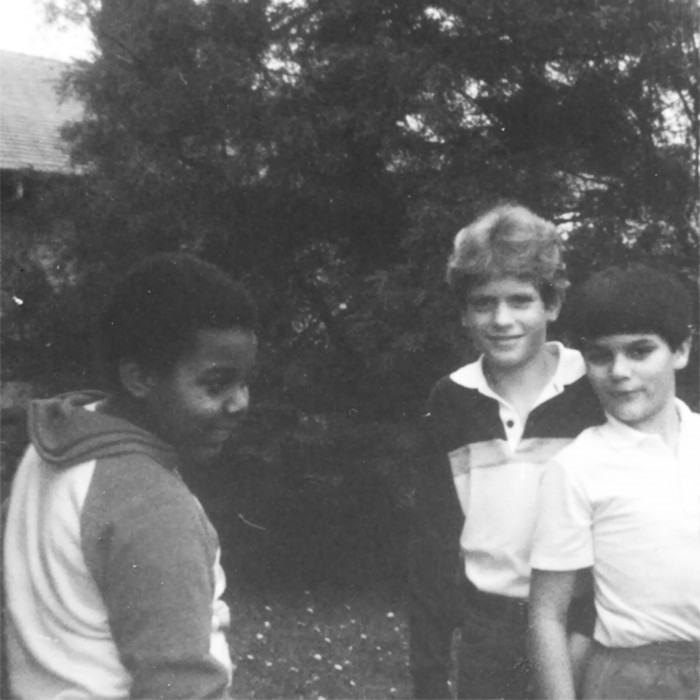Longing For A More Colorful Table (Not A Colorblind One)
*note: image above – Introduced on July 31, 1968, Franklin was the first African American to be included in the Peanuts comic strip. I don’t know why he’s all alone on that side of the table, but I’m glad he was invited.
* * * *
Last week, I received a letter from my national church leadership asking me and all the other pastors of our 12,792 churches in the U.S. to observe #BlackLivesMatter Sunday (you can read that letter here). The request was to acknowledge the day and pray. So I did that.
I’ve been surprised at the amount of pushback I’ve received. Some of it has been thoughtful and kind and caring. Some of it has been harsh and judgmental. Quite honestly, in 22 years of full-time ministry, I’ve never ruffled this many feathers.
Ruffling feathers isn’t something I live for. I don’t get energized by offending people.
Right now I’m in the process of listening and evaluating. I’m hearing what people are saying. I’m searching my heart for impure motives and my mind for truth. Also, I’m praying.
I don’t believe hashtags or slogans will change the world. They have their place I’m sure, but the slinging of rhetoric back and forth is of no interest to me. Honest and heartfelt dialog is.
Asking, listening, learning, and sharing with vulnerably is what is needed, in my opinion.
When I received the letter from our church leadership about #BlackLivesMatter, I was both impressed and saddened. I was impressed because this is the first time I’ve heard them speak to the issue of race and provide any kind of leadership. And I was saddened because the letter referenced our “counterpart” – the COGIC (Church of God in Christ) – inadvertently acknowledging the deep segregation still at play within our churches.
You see, our heritage goes back to the Azusa Street Revival from the early 1900′s. Charles Parham – a white man, and William Seymour – a black man, were the key leaders in this movement.
The beginning days of this revival were marked by incredible diversity – rich and poor, black and white, people from all different backgrounds. But Charles Parham was a racist (by 1910 he was a full-fledged member of the KKK). This fractured the diverse group and eventually led to the founding of two “counterpart” churches – the Assemblies of God (white) and the Church of God in Christ (black).
These two churches were founded in 1907 and 1914. One hundred years later, the segregation remains. The black church and the white church…
A table where whites gather and a table where blacks gather.
I spoke about this exactly one year ago in a message entitled “Hope Arrives For All Mankind.” Here are a few lines from that sermon:
Does hope arrive for the select few or does hope arrive for everyone?
I grew up learning about a Jesus who came for white middle class people and went to a church full of people who looked just like my family. But there was something weird about it…
You see, my best friends were Carlos and Danny. Carlos is Mexican and Danny is black.
We lived in the same neighborhood. We went to school together. We hung out together after school. Went to each other’s birthday parties. We played at each other’s homes. We had adventures together and got into plenty of mischief together.
There was one thing we didn’t experience together. When it came to God, we went our separate ways.
I went to the white church, Danny went to the black church, and Carlos went to the Spanish church.
Our churches all had a homogenized feel about them. Everyone looked and sounded and smelled pretty much the same.
Even as a kid, I thought it was weird.
I had this sense that Jesus hadn’t just come for MY tribe, but for every tribe, every nation, EVERYONE!
I didn’t believe that hope arrives for MY GROUP ONLY, but for ALL.
* * * *
I don’t know if this sermon from last year offended anyone or ruffled any feathers, but I do know that nobody said anything to me about it. No anonymous letters. No conversations. No pushback.
Maybe that’s because this year it has become a politicized issue. I don’t really know.
What I do know is that I am still bothered by racism and segregation and division. I want the church to be a less homogenized place and a more colorful place.
I’m longing for a more colorful table, not a colorblind one.
I long for a table where everyone is invited, everyone is welcome, everyone is represented, and everyone is heard.
I long for a table of mutuality, compassion, solidarity, kinship, and one where we recognize the Imago Dei - the fact that we are all image-bearers of God, made in His image and likeness.
I long for a table where honest conversations can happen, where we listen with empathy.
I long for a table where we rejoice when others rejoice.
I long for a table where we grieve when others grieve.
I long for a table of discovery – where we discover one another. Flavor. Music. Culture. Desires. Fears. Burdens.
I’m longing for a more colorful table.
That is all.
RELATED: “Why #BlackLivesMatter Makes You Uncomfortable”



Wonderful to read. Thank you. My mom raised us to never look at others as different. We were no better than anyone and neither were they. Jesus loved everyone, EVERYONE the same. We were made by God and He loves us all the same. Thank you
Loved reading this. Thank you. I felt a little tension in myself when you addressed this. We were sitting next to our good friends (both police officers). This was the first time the Dad had come to church (kids sing brought him there). It was a little hard only because I know what they sacrifice to protect our communities. This feeling I had was a result of how our media has politicized this particular topic. I know my friends put their lives in danger every time they are in uniform. I also realize that we cannot judge an entire group of people by any singular negative action. All lives matter. We are all children of God. What a beautiful thing. Thank you again Pastor Brian. You addressed what is current but at the same time made me reflect on the fact that ALL lives matter…every race, profession, man, woman, child, unborn child, every socioeconomic level….no difference in the eyes of The Lord. On earth as it is in heaven. Much Love and gratitude.
How powerful, Brian. Your message gave me a lot of hope. Conversations about race can be uncomfortable, but necessary. The discomfort is because there are problems. As Jon Stewart said, supporting police and believing that all lives matter are not mutually exclusive. Thank you for being a part of the conversation and
The church – and by that term I mean all followers of Jesus – is not called to an easy path. We are called to face the difficult with wisdom and grace. To come alongside the vulnerable, wherever we see them. To offer a cup of cold water to the thirsty, and bandages to the wounded. We are called to do so without judgment, only because we have all fallen short in some way or another. When we do these things in the midst of our imperfection, and when we lift up one part of the church that is suffering, we are not denigrating or diminishing any other part of the church. We are all striving to dwell in the same light. That light needs to shine in every corner of the church, equally. My prayer is to continually allow that holy light full access to my soul, no matter if it pains me. I don’t want all of my blessings to be a stumbling block to hearing from God. And often that happens through other human beings. Let us continue the conversation in hopes that the Spirit is whispering through our assembled hearts, wanting to do a beautiful thing. You have my full support.
Louise, that was so beautiful I cried. No words. Just…thank you.